Air time: Marc Newson gives the Atmos clock a lighter touch
Marc Newson talks about the design process behind his latest Jaeger-LeCoultre Atmos clock. Film courtesy of Jaeger-LeCoultre
Anyone who knows Marc Newson knows he loves watches. Indeed, he has been creating them since the mid-1990s, when his Swiss Ikepod brand refreshed traditional horological thinking with a whole new design sensibility. But even Newson couldn’t have imagined that he’d become the most recognised watch designer in the world when the Apple Watch launched last year.
Today, fresh out of his horological dalliance with Silicon Valley, Newson looks content in the altogether more picturesque Vallée de Joux, the heartland of Swiss watchmaking. He is here to take a final look at the results of his latest time-keeping collaboration with Swiss watch and clock manufacturer Jaeger-LeCoultre, which this month will reveal its third Newson-designed Atmos clock. It has been two years in the making.
Marc Newson designed his first Atmos for Jaeger-LeCoultre - the 561 in 2008, followed by the 566 in 2010. This new iteration, the 568, is a distinctly honed version of both, in part, Newson says because the plan is to extend the production volume, which will, in turn, lower the price. The previous models were strictly limited editions of no more than 25 and were priced upwards of around €80,000. The new 568 is not limited and will retail in the vicinity of €25,000.

Mark Newson photographed at the Jaeger-LeCoultre manufacture in Le Sentier, Switzerland.
It felt like the Atmos was being left behind when I came along’, says Newson, of the initial collaboration. ’I love the idea of designing objects that stand the test of time, things that you can hand on, pass through the family. I don’t think about Atmos clocks as clocks - they are wonderful, sculptural objects that happen to be timepieces. You’ll never find an Atmos clock in landfill because they are inherently valuable objects; the opposite of disposability.’
The Atmos has been in continual production since 1933. The engineer Jean-Léon Reutter designed the technology in 1928. He wanted to invent a timekeeper that would keep perfect time for centuries, without the need for any outside intervention. He devised a gas-driven mechanism activated by small, sequential changes in temperature, and the Atmos clock got its brilliantly futuristic name. Jaeger-LeCoultre, by then one of a handful of grand maisons of Swiss watchmaking, acquired, perfected and developed Reutter’s idea. Atmos clocks are powered by a small, hermetically sealed gas chamber - originally filled with mercury - which dilates when the temperature rises and contracts when it drops. At Jaeger-LeCoultre’s specialist Atmos department in Le Sentier, it is often referred to as ’the mechanical lung’ that ’breathes’ in and out, winding the mechanism in line with atmospheric shifts. The clocks are so energy efficient that a mere one-degree Celsius shift will power the clock for 48 hours.
The futurism of Reutter’s vision is compelling to a designer of Newson’s technical breadth. ’The Atmos clock keeps time beyond any outside influence that, in itself, is completely modern,’ he says. Then, there is Atmos’ Steampunk aesthetic. ’The clocks are so sculptural that I knew they could be interpreted in a contemporary way. The glass casing was generally a means of keeping the movement covered, but glass has obvious structural qualities, so it’s not like we are putting a movement in a fish tank - it’s a holistic process because we work from the outside in.’
Receive our daily digest of inspiration, escapism and design stories from around the world direct to your inbox.
Because of the Atmos 568’s expanded production potential, Newson had to take a different approach. The case was created with French crystal specialists Baccarat from a monobloc of crystal. The process to perfect the form has taken two years because Newson did not want a symmetrical outline. Rather, he wanted a low curve at the bottom, which better plays with the light and gives a sense of the mechanics floating. That anomaly caused havoc because, as Newson points out, ’Glass relies on consistency. As soon as you introduce an irregularity, it goes all over the place.’
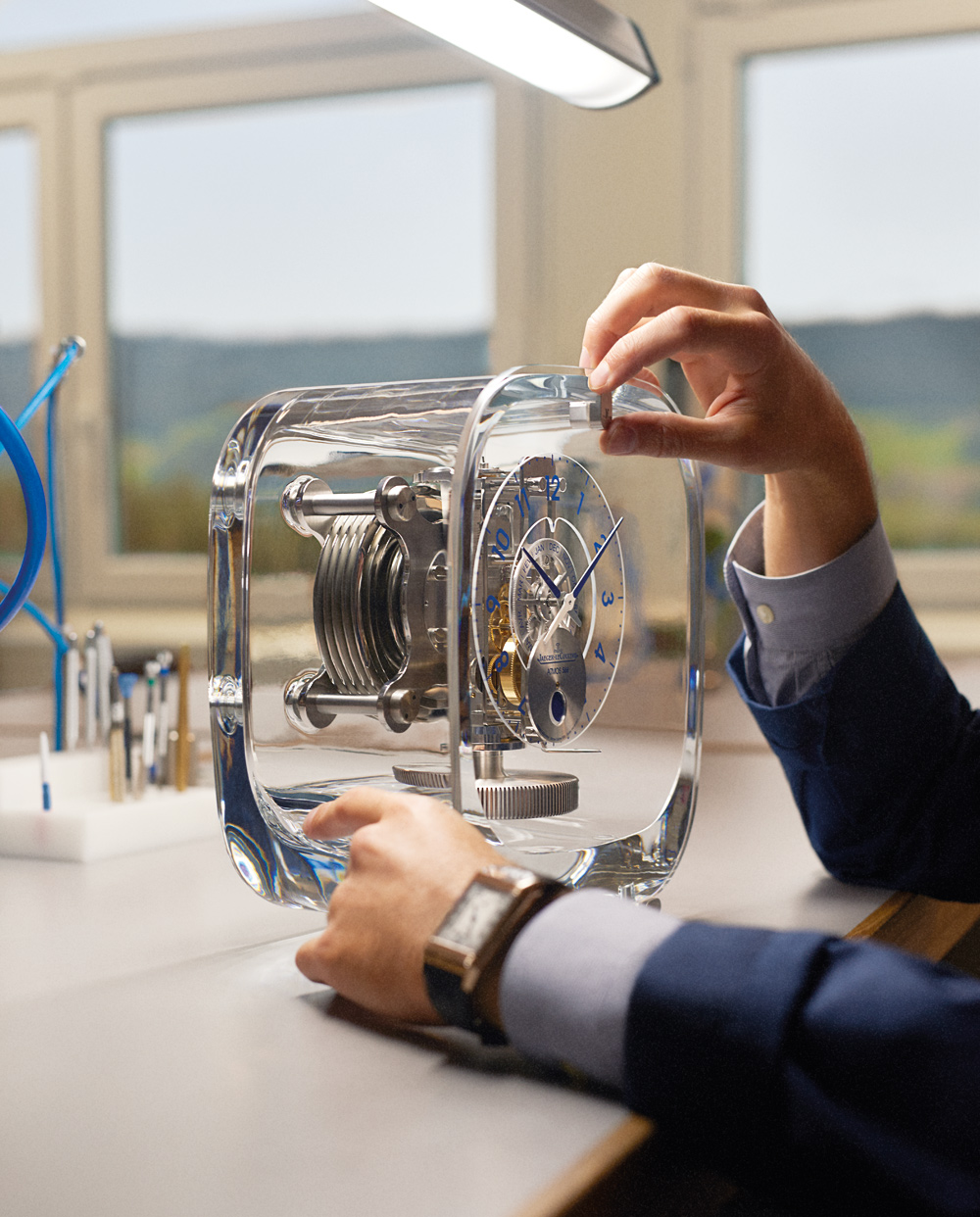
An horological engineer fine tunes the details on the Atmos 568.
The crystal also has to be polished inside and out which, on this scale, is a highly specialised technique. ’The level of precision needed was greater because the form has to be easily repeatable,’ says Newson. ’The shape is more rigid than the previous ones and that’s because it’s a particular formation of crystal glass. I’ve worked with glass in many applications across my projects. Making that shape is almost impossible - only Baccarat could do this.’
Newson was also keen to ’inject a level of newness’ to the movement, which he did with decorative details. The bolts that attach the movement and chamber to the glass are designed by him and, being a skilled watch designer, Newson used smooth and brushed finishes to heighten shadow play and add depth. The crystal, too, has been designed to play with light, giving the clock an intriguingly new character from different points of view. The dial, moonphase and hands are created in-house, and the numerals are tampography printed. The hands are counterbalanced so that they do not consume any energy when turning.
Newson is clearly in happy territory here, in the Swiss valleys, working with horological engineers, taming complex materials to create beautiful things. ’It’s always wonderful to get a chance to revisit things, which doesn’t happen much with me’, he says. ’I suppose this time round I’ve approached the design from a more philosophical point of view. The more that tech keeps infiltrating our lives, the more magical objects like the Atmos clock generate more interest - like looking at an open fire. They’re mesmeric.’
As originally featured in the November 2016 issue of Wallpaper* (W*212)
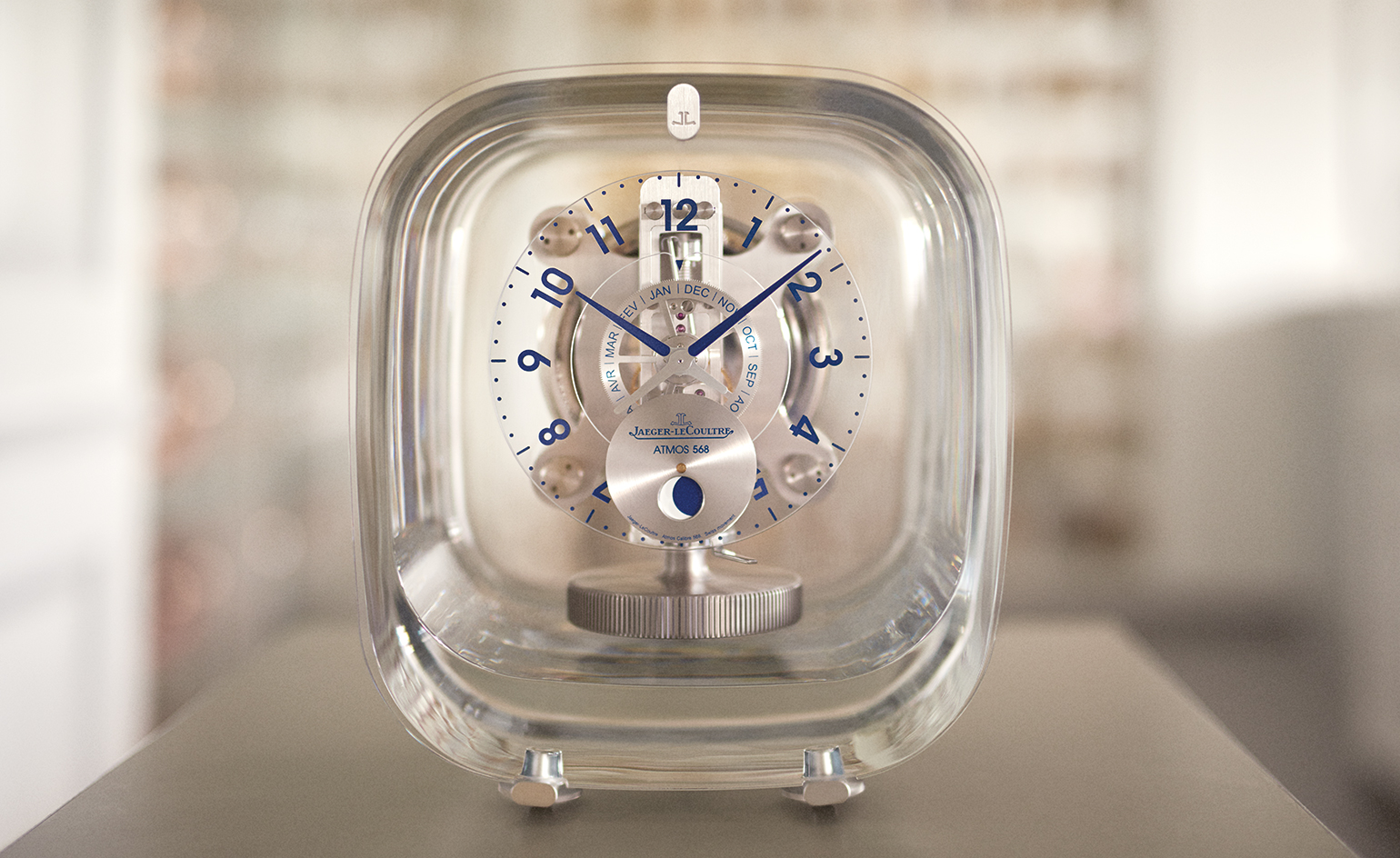
The Jaeger-LeCoultre Atmos 568 is the latest in a series of clocks that Marc Newson has designed for the Le Sentier watch marque.
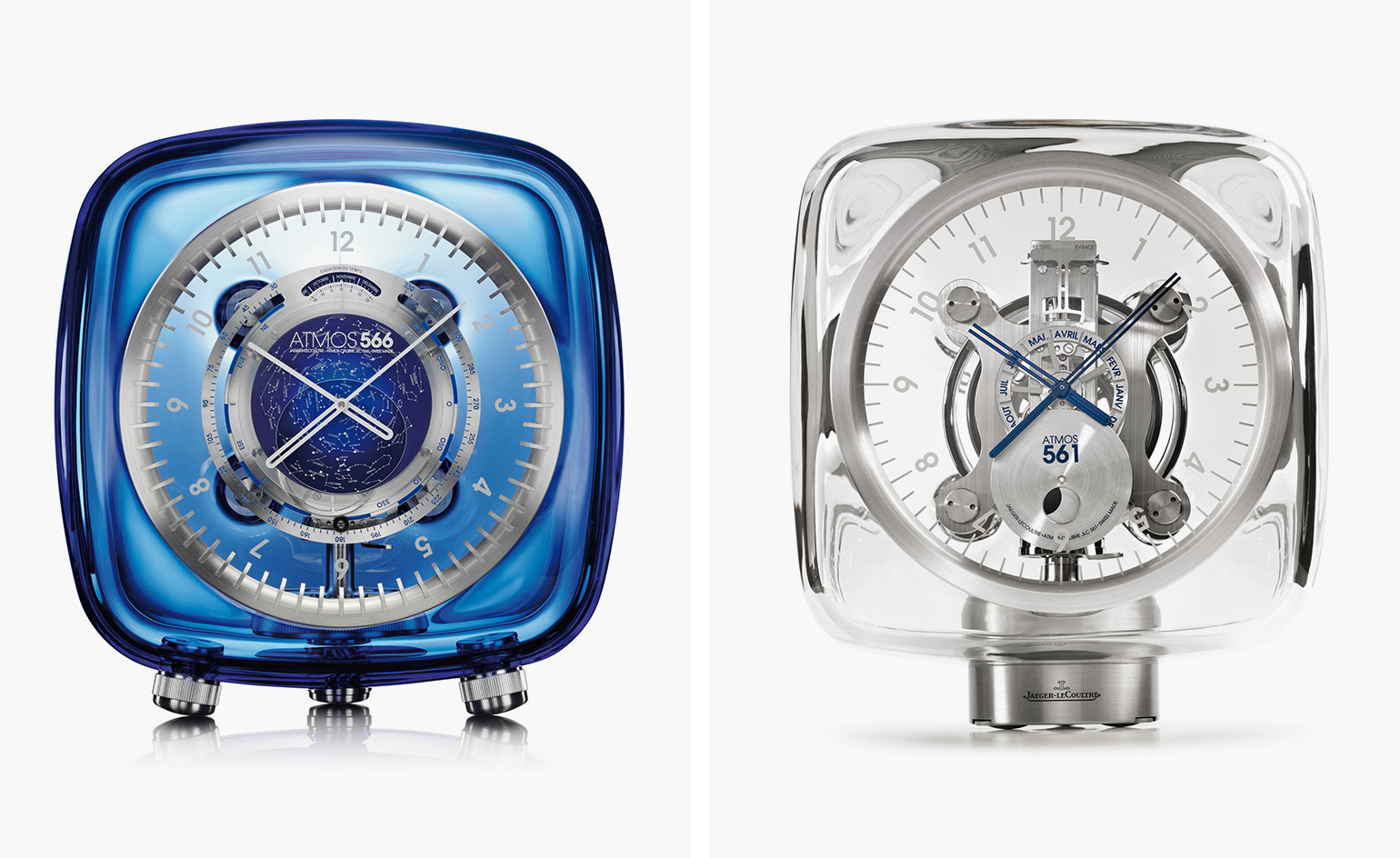
Marc Newson designed the Atmos 566 in 2010 and his first edition, the 561, in 2008. The new 568 clock is a distinctly honed version of both.
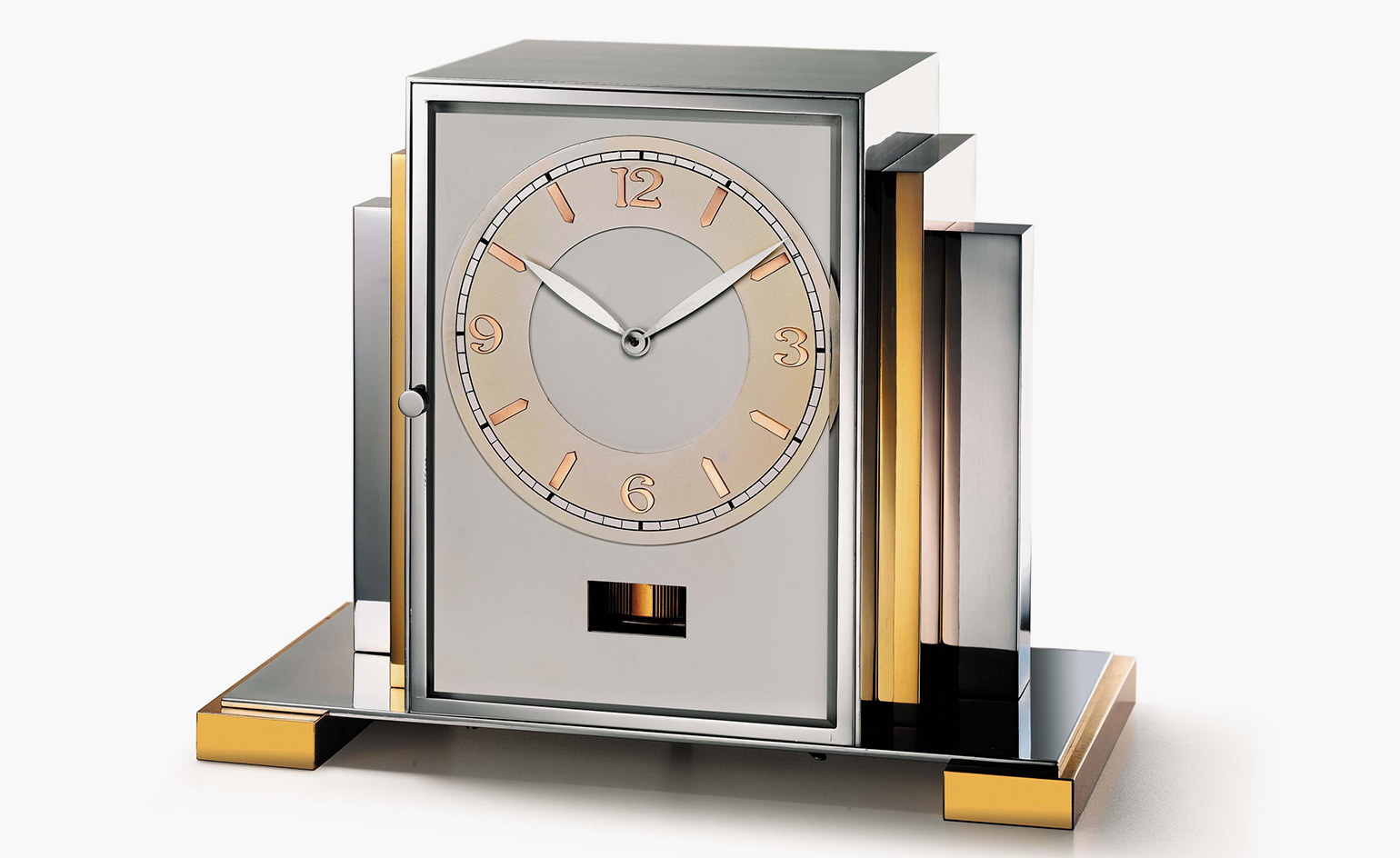
The Atmos clock has been in continual production since 1933. This ‘Type Moderne’ Atmos was designed in 1935.

’L.A.C.’ Atmos, circa 1934.
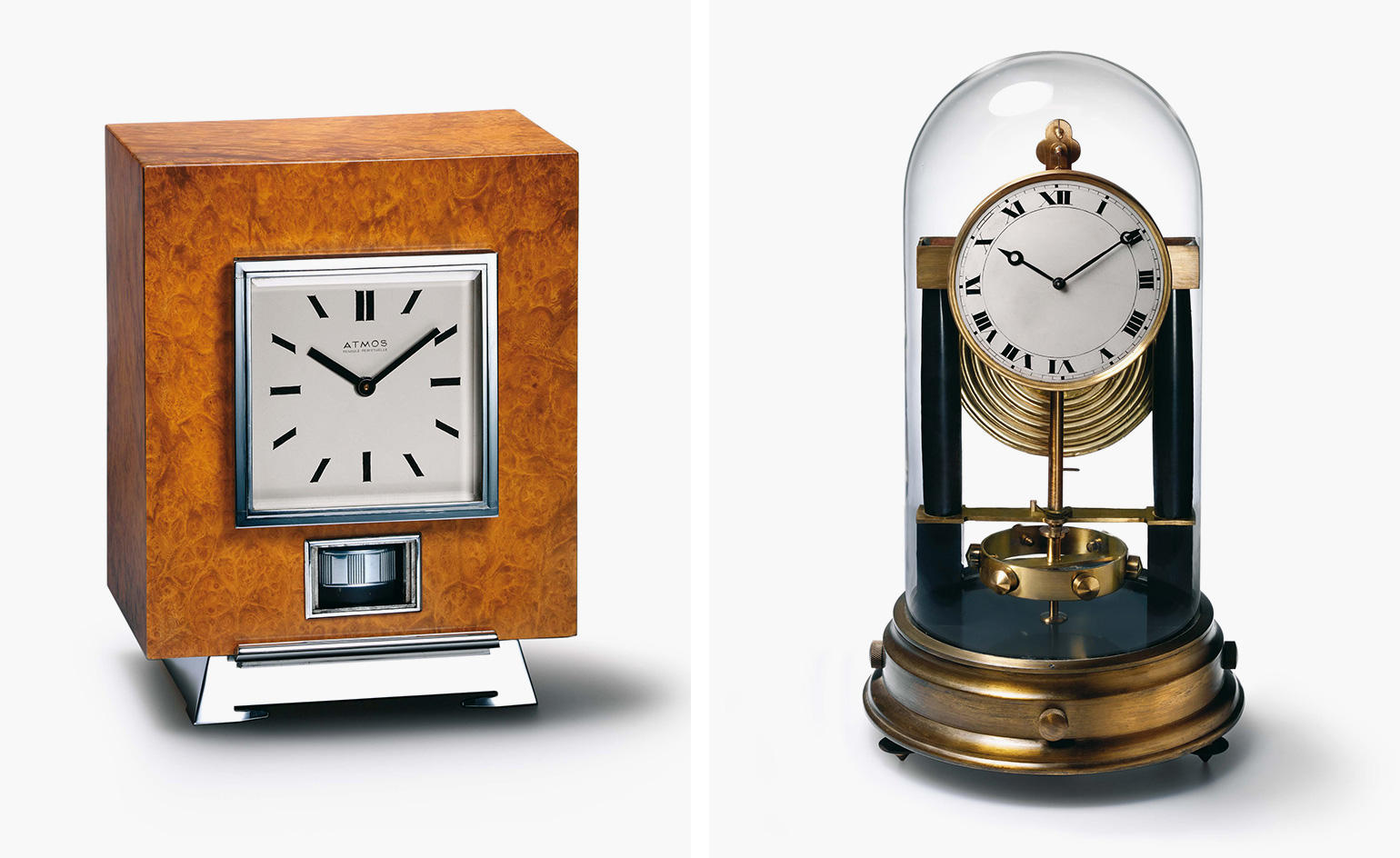
Left, Atmos 1, circa 1933. Right, the first prototype of the Atmos, 1928.
INFORMATION
For more information, visit the Jaeger-LeCoultre website
Caragh McKay is a contributing editor at Wallpaper* and was watches & jewellery director at the magazine between 2011 and 2019. Caragh’s current remit is cross-cultural and her recent stories include the curious tale of how Muhammad Ali met his poetic match in Robert Burns and how a Martin Scorsese Martin film revived a forgotten Osage art.
-
 This curved brick home by Flawk blends quiet sophistication and playful details
This curved brick home by Flawk blends quiet sophistication and playful detailsDistilling developer Flawk’s belief that architecture can be joyful, precise and human, Runda brings a curving, sculptural form to a quiet corner of north London
-
 Usher opens up about breakfast playlists, banana pudding and why a glass tumbler is always on his rider
Usher opens up about breakfast playlists, banana pudding and why a glass tumbler is always on his riderOn the heels of a collaboration with Baccarat, the Grammy-winning singer-songwriter breaks down his entertaining tips. 'Hosting is an expression of how you feel about your guests and also who you are.'
-
 The beauty trends that will define 2026, from ultra-niche fragrances to anti-ageing dental care
The beauty trends that will define 2026, from ultra-niche fragrances to anti-ageing dental careAs we enter the new year, we speak to experts in fragrance, skincare, aesthetics, wellness and more about the trends that will be shaping the way we look
-
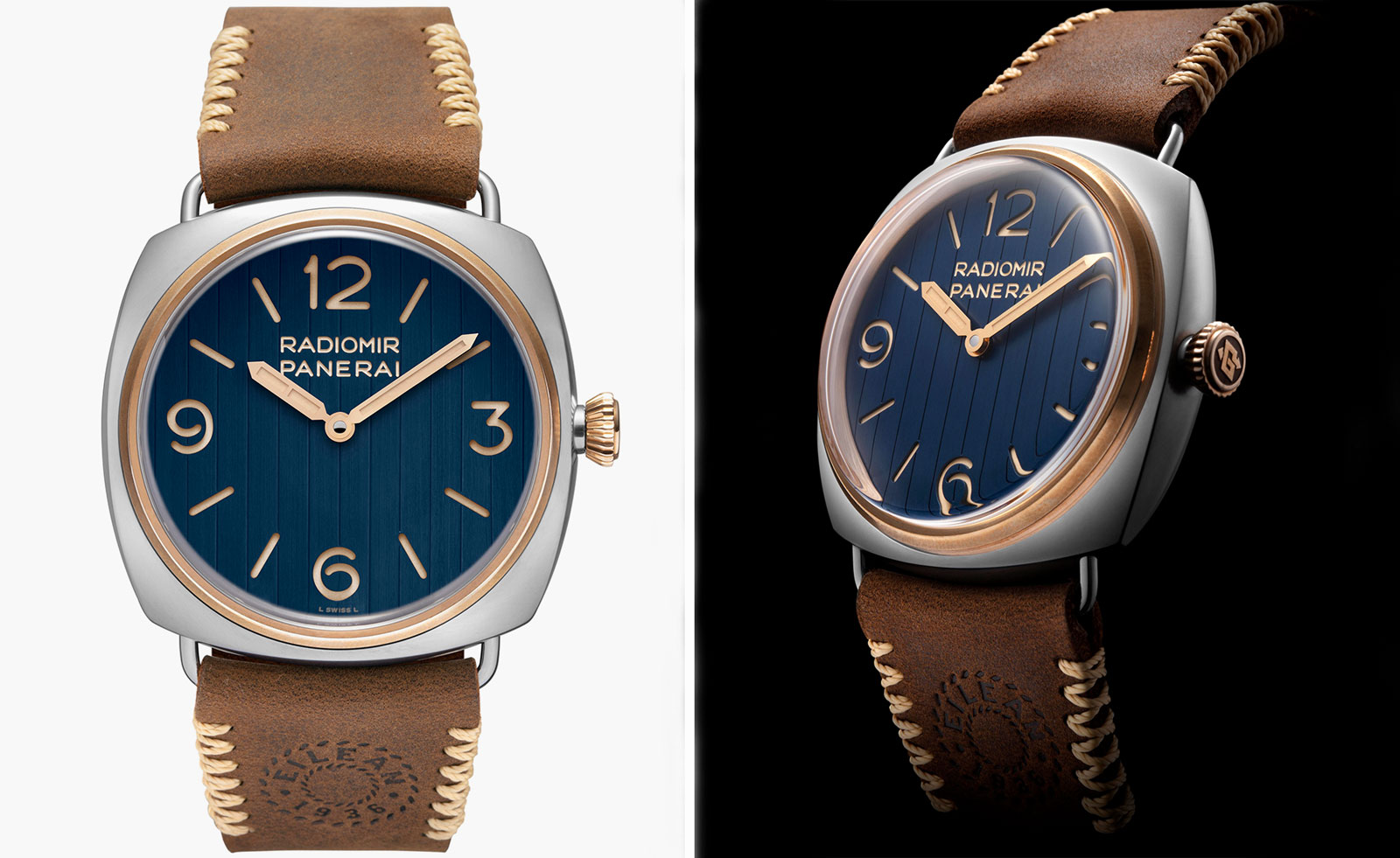 Panerai’s new watch is full of nautical nods
Panerai’s new watch is full of nautical nodsPanerai encapsulates the classic design of a yacht in the Radiomir Eilean Experience Edition watch, and plots a course into new, metaverse waters
-
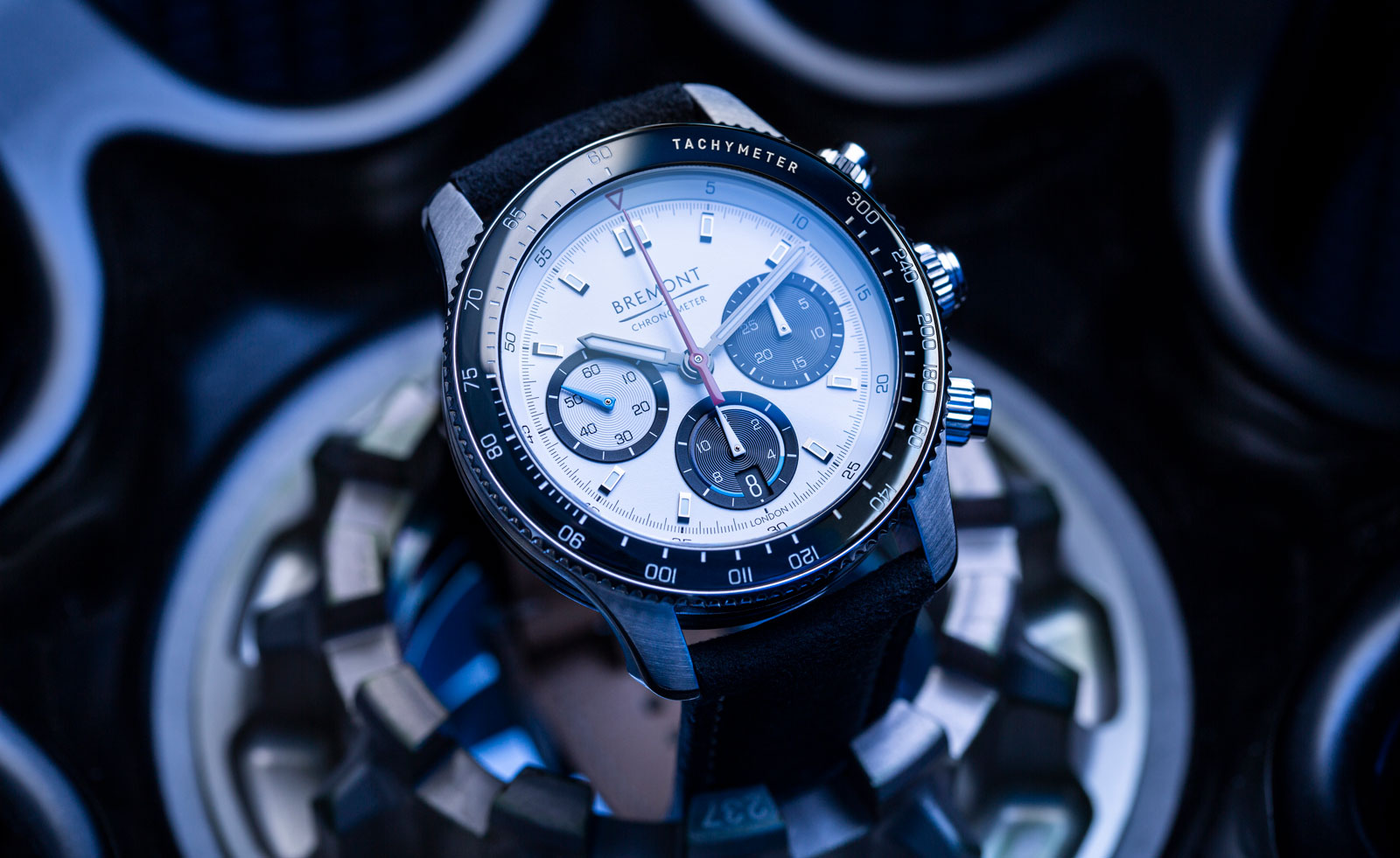 On your marks and get ready for Bremont and Williams Racing’s new watch
On your marks and get ready for Bremont and Williams Racing’s new watchBremont and Williams Racing have partnered on the Bremont WR-22 watch – and it's a sporting triumph
-
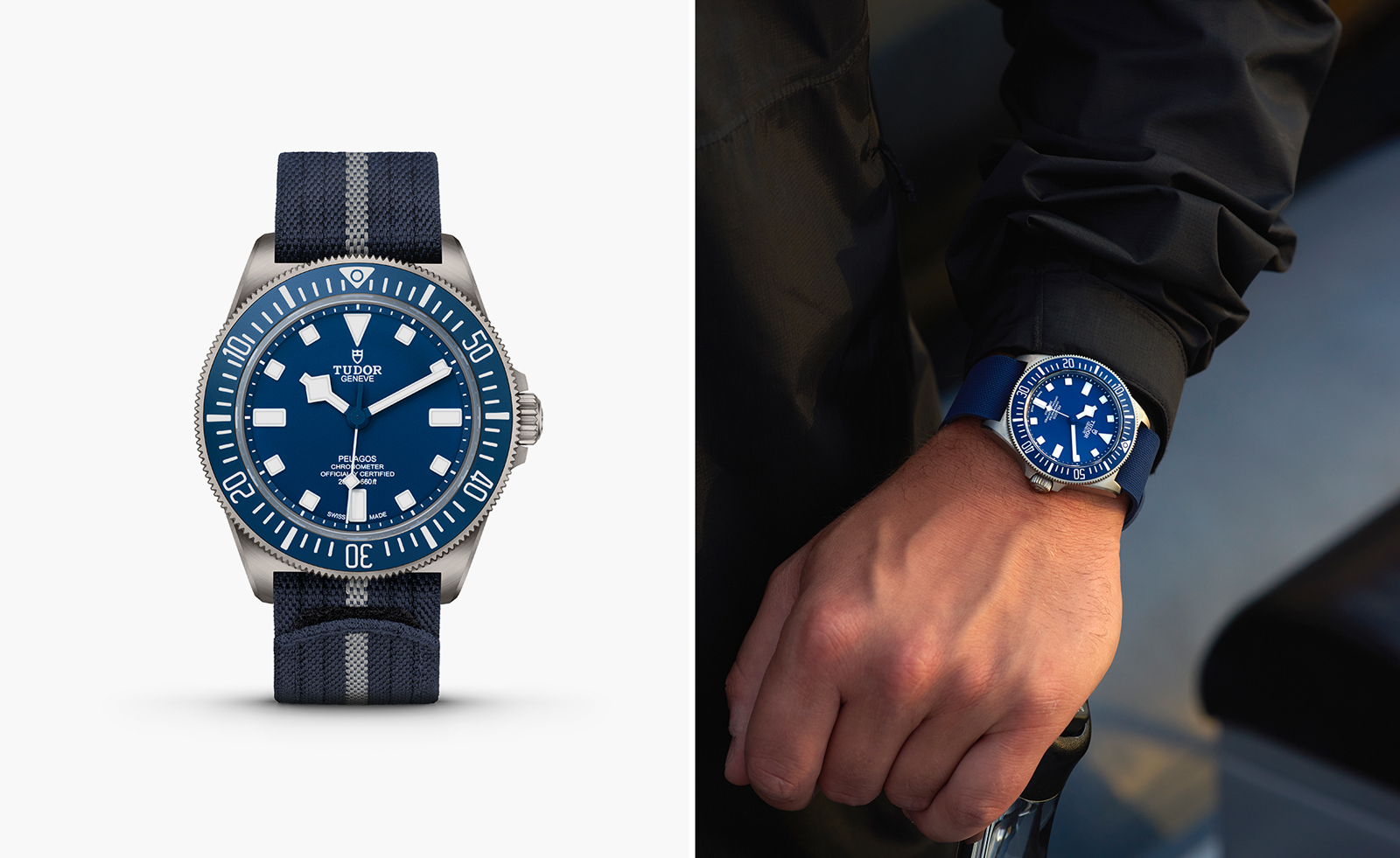 Tudor unveils new watch developed with French Navy
Tudor unveils new watch developed with French NavyThe new Tudor Pelagos FXD watch draws on the brand’s diving watch history and the needs of elite combat swimmers
-
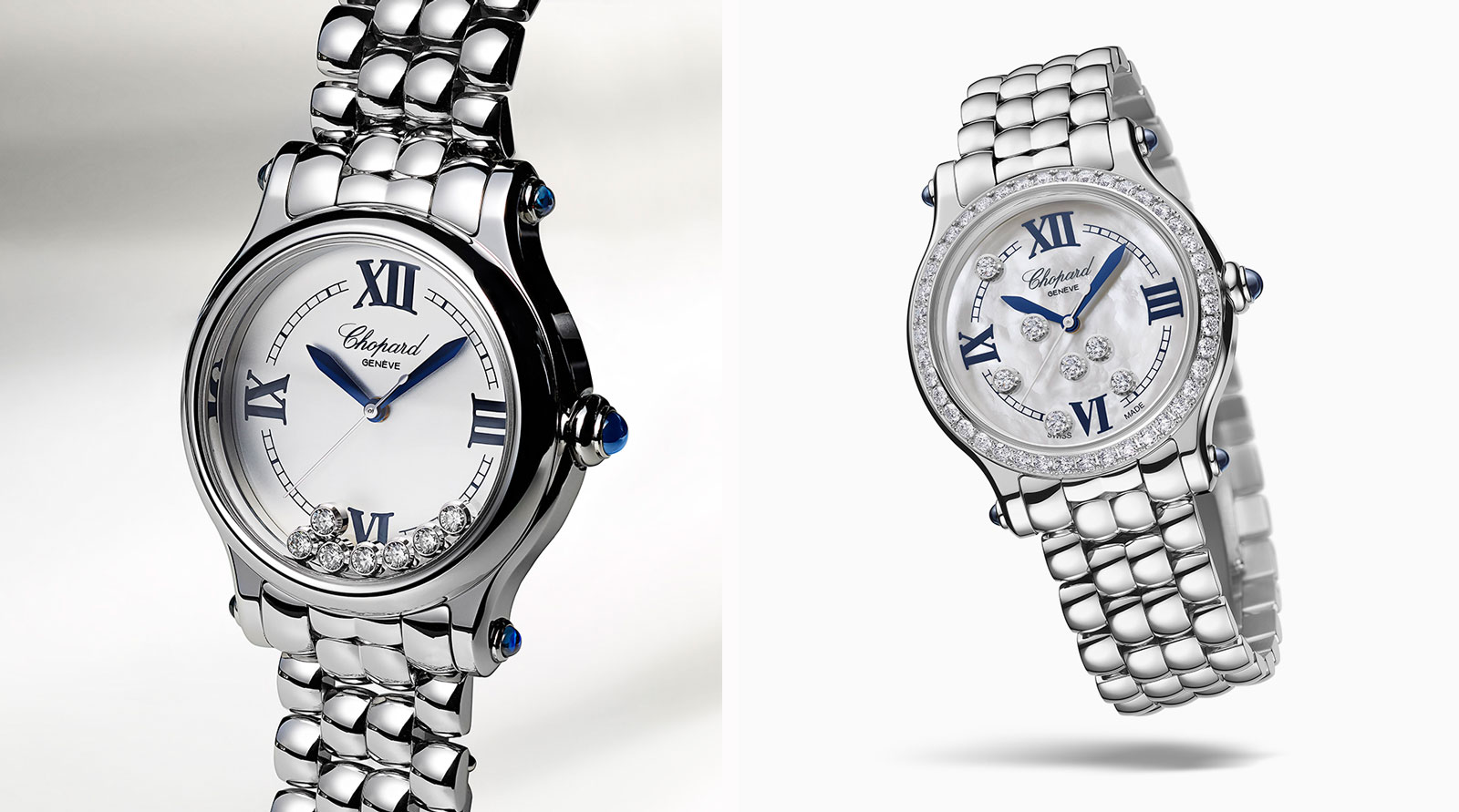 Chopard Happy Sport watch puts a playful spin on diamonds
Chopard Happy Sport watch puts a playful spin on diamondsTwo new editions, titled Chopard Happy Sport The First, rethink the classic sports watch for women and tantalise with dancing diamonds
-
 Nomos puts a sporty twist on a classic with the new Club watch
Nomos puts a sporty twist on a classic with the new Club watchThe limited edition Nomos Club pieces are available in three muted colours
-
 Into the deep: Tudor’s new diving watch builds on a rich history
Into the deep: Tudor’s new diving watch builds on a rich historyThe Tudor Black Bay Fifty-Eight ‘Navy Blue’ is the latest sports watch from the Swiss watch brand
-
 Apple and Hermès reveal how their ultra-connected design could help us unplug
Apple and Hermès reveal how their ultra-connected design could help us unplug -
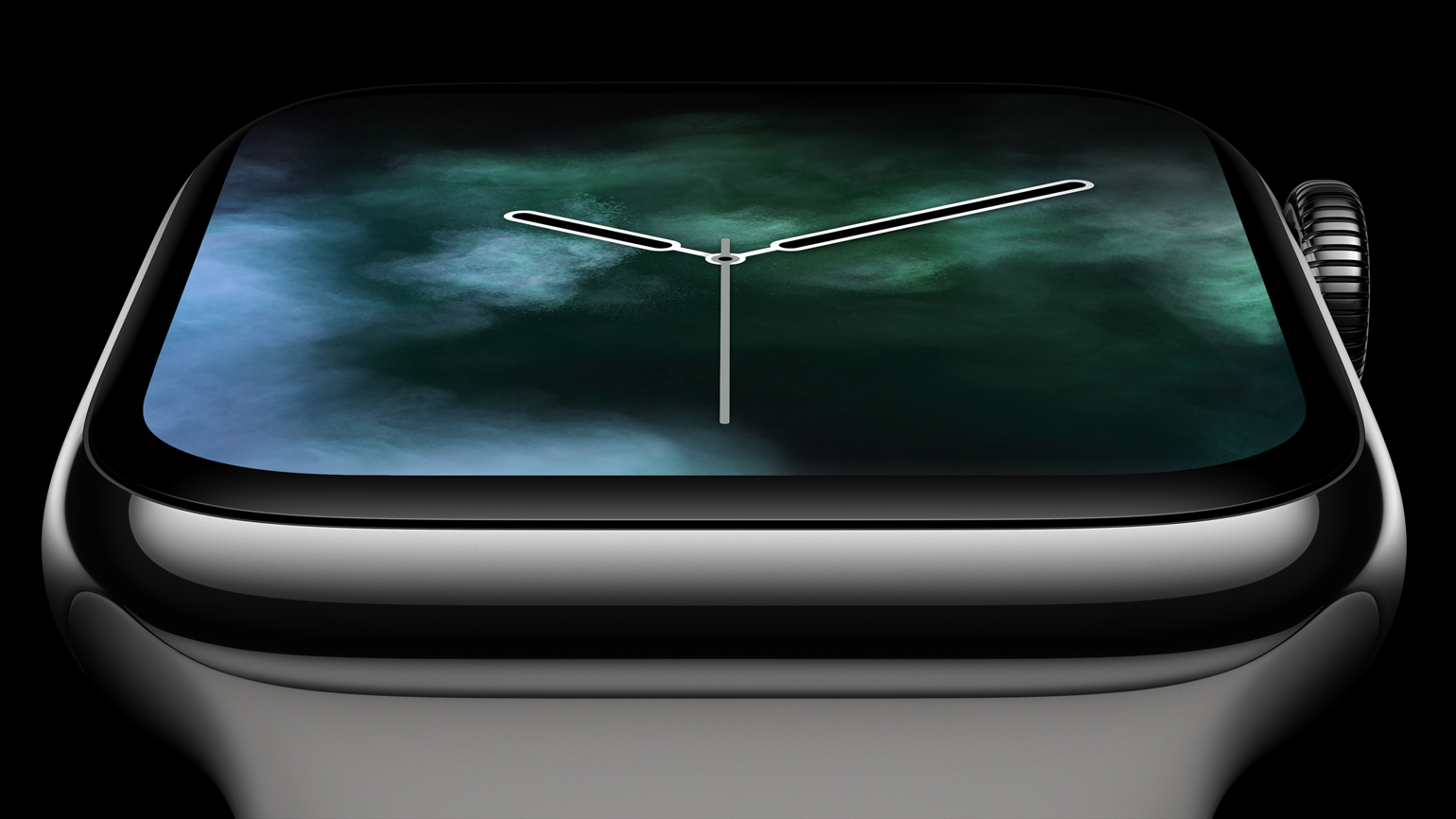 Jony Ive goes behind the screen of the new Apple Watch with Tony Chambers
Jony Ive goes behind the screen of the new Apple Watch with Tony Chambers